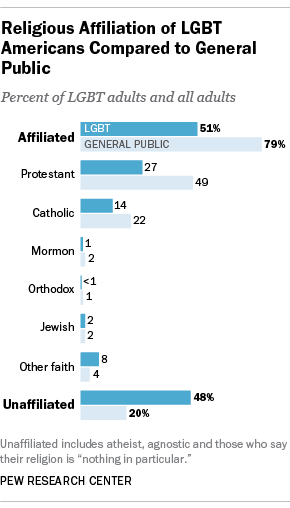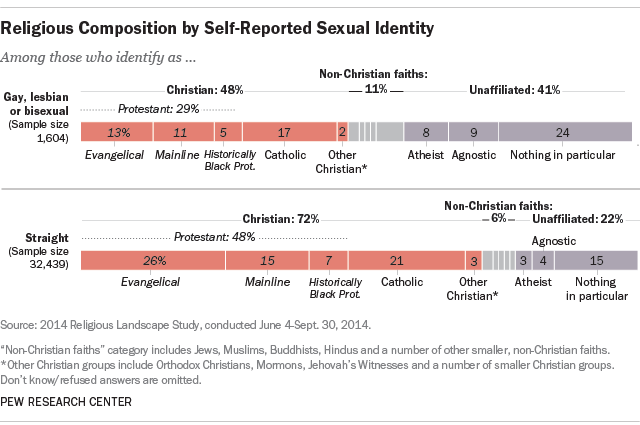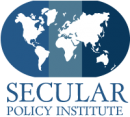The weekly report on research and demographics of the secular movement
by Julie Esris
Over the past ten years, America has become much more accepting of transgender people. News programs such as 20/20 and 60 Minutes have reported on transgender adults and children. Some celebritiesÔÇösuch as Laverne Cox and Chaz BonoÔÇöhave put a familiar human face on the reality of the transgender experience. Earlier this week, the Olympic athlete formerly known as Bruce Jenner added to the list of openly transgender celebrities. Bruce now calls himselfÔÇöherselfÔÇöCaitlyn; she made her public debut as a woman on the cover of Vanity Fair magazine, and is yet another symbol of the growing acceptance of transgender people that has marked AmericaÔÇÖs continuing cultural evolution.
However, there is still a long way to go for America as a whole in accepting transgender people, and religious dogma is one of the barriers to acceptance. A 2013 Pew research study reveals that lesbian, gay, bisexual, and transgender (LGBT) Americans are less likely to have a religious affiliationÔÇöat only 51%ÔÇö than the general population, 80% of which are religiously affiliated. 17% of those surveyed are both religiously affiliated and say that religion is an important part of their lives, versus 54% of the general population. Of those who identify as religiously committed, 38% are evangelical Protestants, 24% are mainline Protestants, and 20% are Catholic. Of the evangelical Protestants, 47% report that their gender identity or sexual orientation conflicts with their religious beliefs. However, only 20% of mainline Protestants feel such a conflict.
Conversely, a May 2015 Pew study, which surveyed lesbian, gay, and bisexual (LGB) peopleÔÇöonly making a passing reference to transgender peopleÔÇöreveals that most people in the LGB community are religiously affiliated, but that they are less likely to be Christian. This conflates slightly with the 2013 study: 59% in the 2015 study are religiously affiliated (versus 51% in the 2013 study). There are other slight variations. The 2013 study, which included transgender people, reports that 27% are affiliated with Protestantism, versus 29% for the 2015 survey, which did not include transgender people. The 2015 study also reveals that LGB people are more likely to identify with esoteric faiths, such as Wicca or paganism (estimated between 2.4% and 2.9%) than the general population. Both the 2013 and the 2015 studies indicate that 2% of those surveyed identify as Jewish. The 2013 survey reports that 14% identify as Catholic, versus 17% of the respondents in the 2015 survey. The small disparity between the two surveys could be meaningless because it is just thatÔÇösmall. Or it could indicate that some churches that accept homosexuality and bisexuality do not accept transgenderism. Not surprisingly, 48% of respondents in the trans-inclusive 2013 survey indicate that they are unaffiliated versus only 41% in the 2015 survey.
It is important to realize that neither of these surveys is complete by any means. The 2015 survey excludes transgender people, both surveys heavily focus on Christian denominations, and only the 2013 survey asks about the respondentsÔÇÖ religious service attendance and importance of religion in their lives. To get a more complete picture of the differences between the two groups surveyed, the 2015 survey would have to have reported the importance of religion in respondentsÔÇÖ lives as well as what percentage of those for whom religion is important belong to which faith. Additionally, the 2013 survey would have had to ask about affiliation with more esoteric religions such as Wicca or paganism. What is clear, however, is that LGBT people are less likely than the general population to be religious. Further, more thorough research is needed for a better understanding of transgender peopleÔÇÖs relationship with religion.
